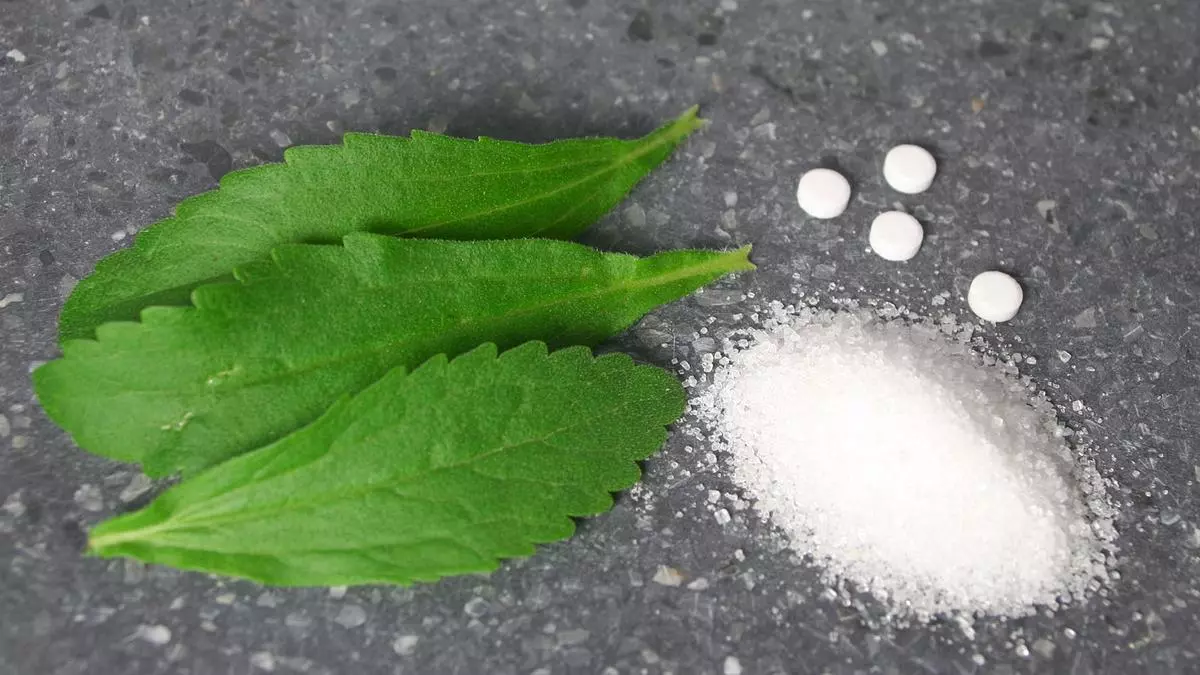Candy leaf (Stevia rebaudiana), a plant recognised for its natural non-caloric sweetening characteristics, also has therapeutic properties for diseases like endocrine, metabolic, immune, and cardiovascular diseases, because of its effect on cellular signalling systems, according to a new study.
Assam exports stevia worldwide. The Central government body North Eastern Council also has highlighted stevia cultivation’s potential to aid the North-East economy due to its high demand and use.
At the Institute of Advanced Study in Science and Technology (IASST), an autonomous institute of the Department of Science and Technology, in Guwahati, researchers Dr Asis Bala, Associate Professor; Prof Ashis K Mukherjee, Director; and Piyali Devroy, research scholar, did a pioneering study on stevia’s medicinal properties. Their multimodal strategy integrated network pharmacology with in vitro and in vivo techniques, showing that the plant used phosphorylation of protein kinase C (PKC) to inhibit a crucial cellular signalling route.
PKC is connected to inflammatory, autoimmune, endocrine, and cardiovascular illnesses. Stevia suppresses PKC phosphorylation, which alters downstream pathways that cause inflammation, a significant cause of endocrine metabolic and cardiovascular issues. The study shows stevia’s promise in this area for the first time. The study also found that active stevia molecules strongly interact with AMPK, highlighting the need for additional research.
This work, published in the journal Food Bioscience, revealed stevia’s potential and identified new targets for immunological, endocrine and cardiovascular problems. It could have therapeutic effects on diabetes type 1 and type 2, autoimmune diabetes, pre-diabetes, rheumatoid arthritis, chronic kidney diseases and cardiovascular diseases like hypertension.
New ink to bust counterfeits
A novel ink with enhanced security features, developed with luminescent nanomaterials, can help stop counterfeiting in currency, certificates, branded goods and medicines. The ink can overcome the limitations of current covert tags, which are security features usually visible only under ultraviolet (UV) light and can be easily duplicated.
Counterfeiting is a growing problem worldwide and researchers are trying to find ways to prevent it.
Luminescent properties of rare earth ions and the characteristic emissions of bismuth have long been known.
Scientists at the Institute of Nano Science and Technology (INST) have used this property of rare earth materials to synthesise a first-of-its-kind security ink based on luminescent nanomaterials with rare earth doping, enabling excitation-dependent luminescence; under both UV and near-infrared (NIR) light it gives visible emission.
The new ink offers enhanced security features through its ability to display different colours under various light wavelengths. Specifically, the ink appears vibrant blue under 365 nm light, pink under 395 nm light, and orange-red under 980 nm NIR light, and remains effective under a range of light, temperature, and humidity conditions.
The luminescent nanomaterial was synthesised using a simple co-precipitation method at 120°C. The nanomaterials were dispersed into commercially available PVC ink using sonication (applying sound energy).
This mixture was then used to create patterns and letters through a screen-printing technique.
The printed patterns, when exposed to different wavelengths of light, clearly showed the desired colour changes, proving the effectiveness of the ink.
